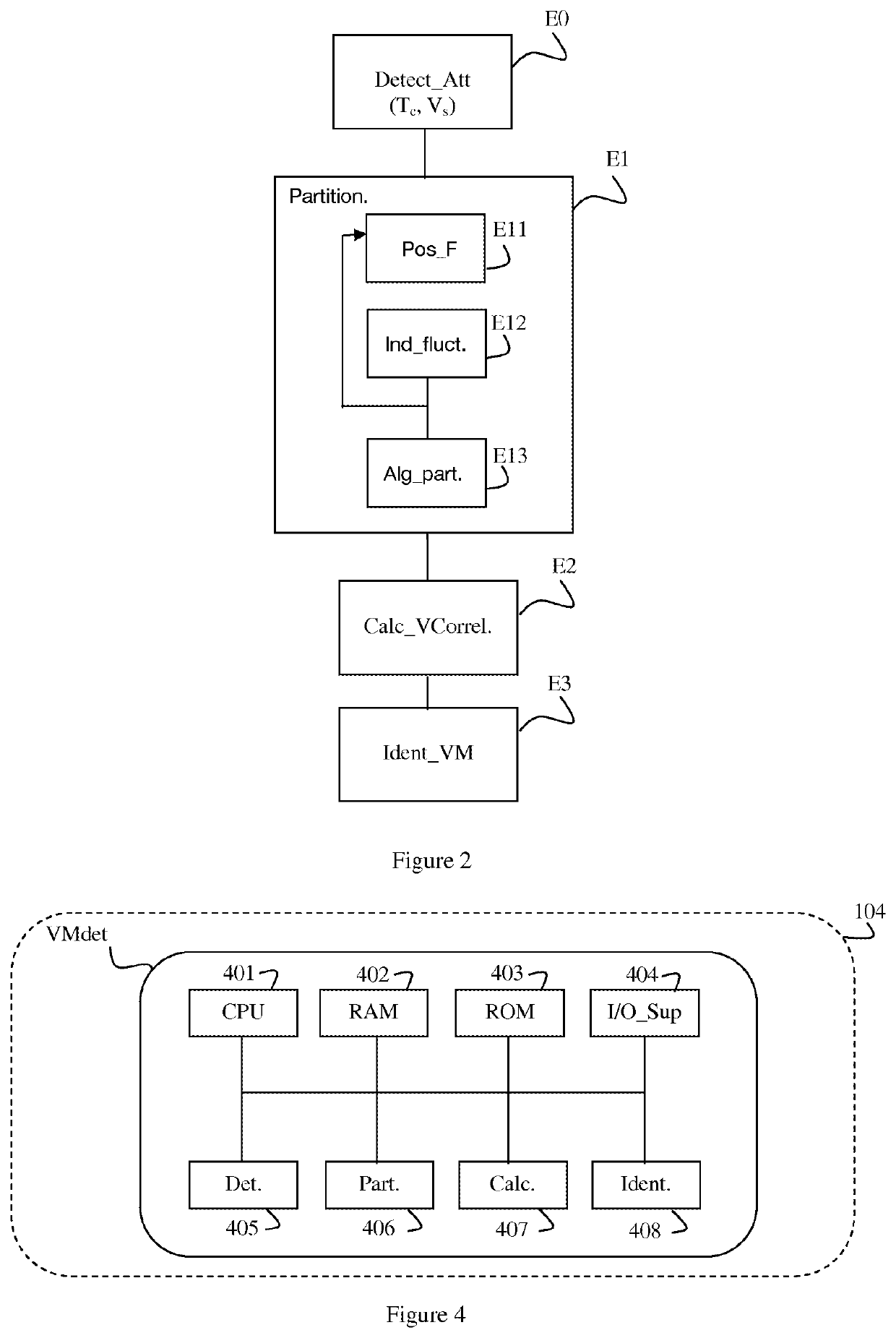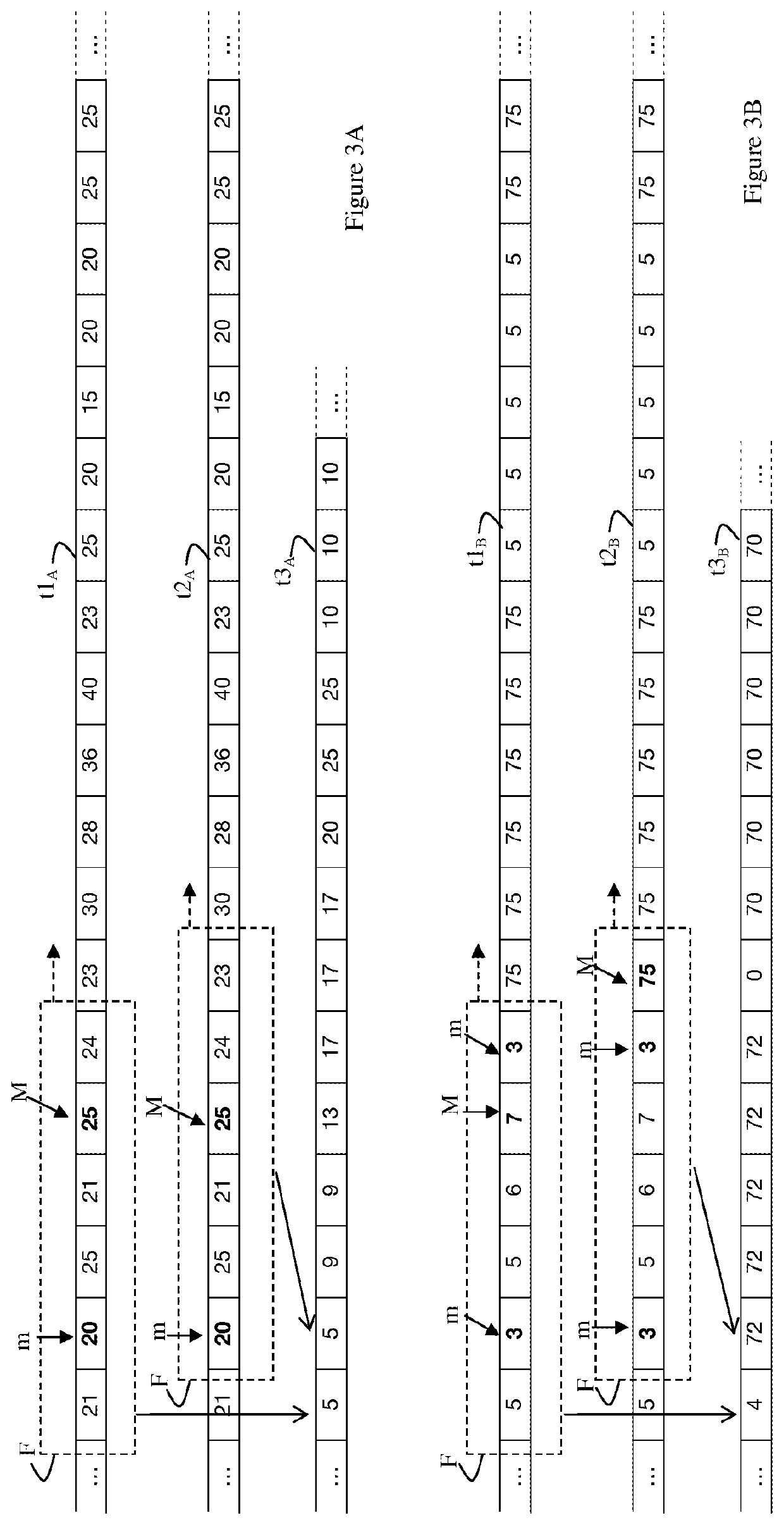Method of detecting attacks in a cloud computing architecture
a cloud computing and attack detection technology, applied in computing, instruments, electric digital data processing, etc., can solve the problems of new type of security vulnerability, migrated machine can suffer from a degradation of performance level, virtual machine may, in the worst case, suffer an unacceptable occasional loss of connectivity, etc., to reduce the capacity of the attacker
- Summary
- Abstract
- Description
- Claims
- Application Information
AI Technical Summary
Benefits of technology
Problems solved by technology
Method used
Image
Examples
Embodiment Construction
[0048]An architecture model suited to the implementation of an attack detection method, according to a first exemplary embodiment, will now be described in relation to FIG. 1.
[0049]A cloud computing infrastructure 10 comprises a set of host servers 101, 102, 103 organized in a cluster 100 of servers. Each host server 101, 102, 103 of the cluster 100 is adapted to host one or more virtual machines VM11, VM12, VM21, VM31. The infrastructure 10 also comprises a detection host server 104, adapted to host at least one attack detection entity VMdet. The detection entity VMdet is a virtual machine which comprises code instructions for implementing the steps of an attack detection method in the cluster 100.
[0050]As is known, a cloud computer architecture like the infrastructure 10 represented in FIG. 1 conforms to a model which comprises a number of execution layers. There are various models. In the example described here, the infrastructure 10 thus rests on a first execution layer, or hard...
PUM
 Login to View More
Login to View More Abstract
Description
Claims
Application Information
 Login to View More
Login to View More - R&D
- Intellectual Property
- Life Sciences
- Materials
- Tech Scout
- Unparalleled Data Quality
- Higher Quality Content
- 60% Fewer Hallucinations
Browse by: Latest US Patents, China's latest patents, Technical Efficacy Thesaurus, Application Domain, Technology Topic, Popular Technical Reports.
© 2025 PatSnap. All rights reserved.Legal|Privacy policy|Modern Slavery Act Transparency Statement|Sitemap|About US| Contact US: help@patsnap.com



